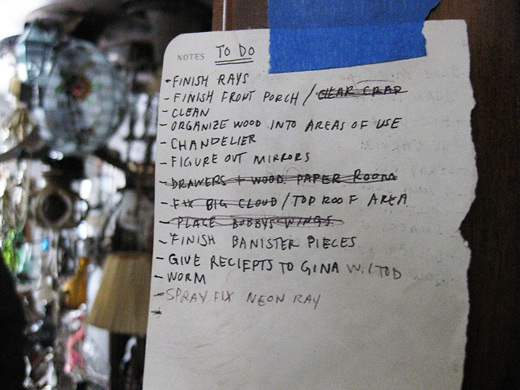
On Saturday, Eric, Danielle, and her sister, Jessica, and I headed over to the Power House neighbourhood walk in Detroit.
I’d been hoping to finally see this project in person, as it’s been a little over two years since I first wrote about it here. I’d missed their residency at the DIA (saw the installation, but didn’t get to see Mitch or Gina) and also missed them at MOCAD (but seeing their Neighborhood Machine on exhibition was very cool). So, to be able to get a tour and talk to Mitch about their project was really, really great.
Above, a to-do list from artist-in-residence, Monica Canilao, who plan to return to purchase the upper-half of this duplex.
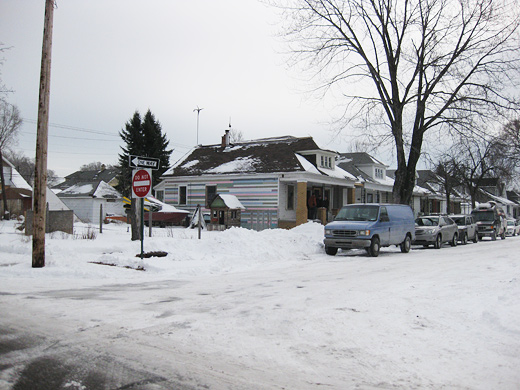
We arrived after getting a little lost. For anyone venturing over, Moran is kind of unmarked from M10, but it’s the first street on your right after you get off of the highway. At 12644 Moran sits Power House, just in from the corner lot.
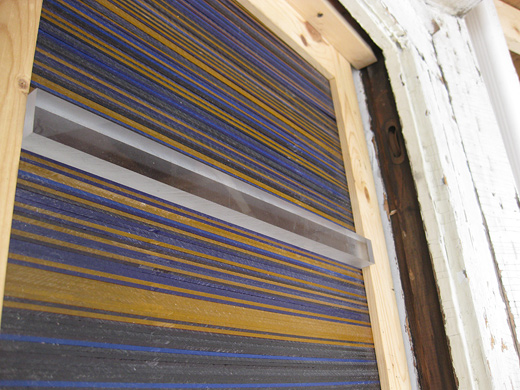
The house itself is under heavy construction, but there’s interesting details abound — and future plans. Windows on the front of the house are substituted for slices of tinted plexiglass. The kitchen is torn apart awaiting the arrival of the next artist in residence, and the attic houses batteries and a newly renovated roof line, allowing light in from due South. They’re moving the project house forward in small incremental steps. Throughout the tour, Mitch emphasized how important it was for them to do things at the scale they could afford (in every sense of the word).
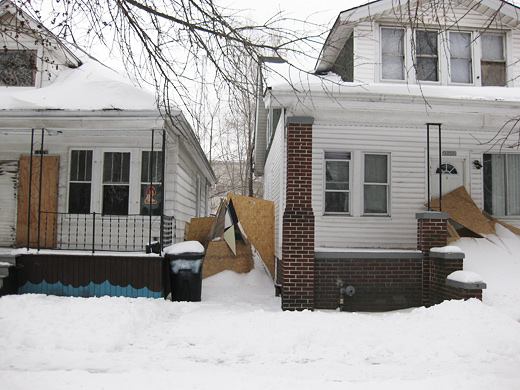
On display down the block, some of Design 99‘s razzle-dazzle security technologies. Architecturally curious and functionally sound for keeping out unfriendly folks to the neighbourhood.
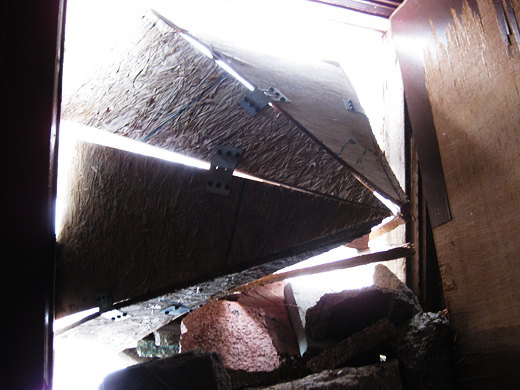
The same type of technology from the inside — securing the houses as they reveal themselves to be vacant.
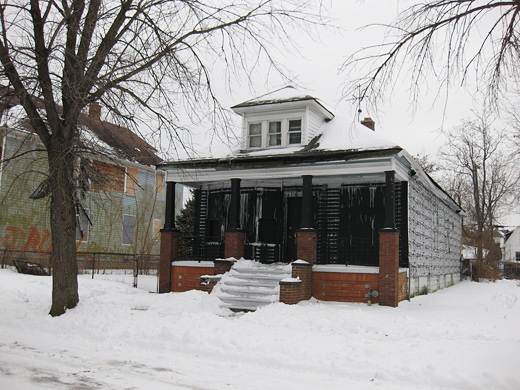
Exterior of the house that RETNA tackled.
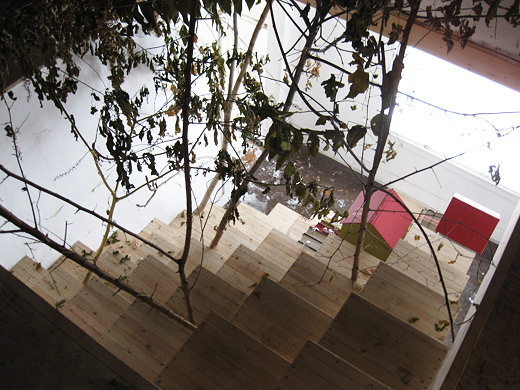
Inside from the opened-up attic looking down at Saelee Oh‘s installation.

Down the street, Monica Canilao‘s project — so incredible.
Perhaps most interesting about their work is the push to reframe the structure of a neighbourhood. Mitch spoke in some detail about future projects that will create new uses for alleys, houses, and vacant lots. In thinking about the possibilities for houses to do something other than house people, Mitch began to frame, in my mind, what’s really at stake in a neighbourhood like this.
Investment can’t always look like a remodeled house (especially when there’s no money), and artists working to stabilize a neighbourhood, with that crucial word being stabilize, and not fix, not repair, not take over, can do something novel for a place. An investment of time seems to continue to crop up when discussing these kinds of practices, and I’m continually swayed that there is so much yet to explore here.

I too have seen some snippets of this project at the DIA, etc. but not in person. Very intriguing and hope to see it live one day. Great photos too!
But one thing that might have been asked before, will such regeneration of neighbourhood be accepted by the City of Detroit? While not the same as the Heidelberg Project, will these artist houses be accepted as truly innovation and important to the regeneration of neighbourhoods or will they be deemed an eye sore by the City? I can’t remember if Tyree Guyton owns all of the houses that he and others transformed, if that makes a difference.
Has there been a dialogue with the City of Detroit for new uses of these spaces. And if not, alas, that is always a concern…should one ask for permission or just ask for forgiveness for the sake of the project.
Looks amazing! Thanks for the post!
leesa